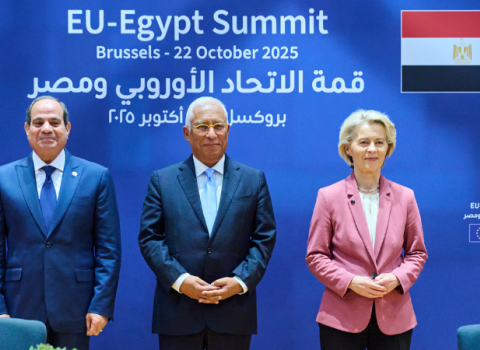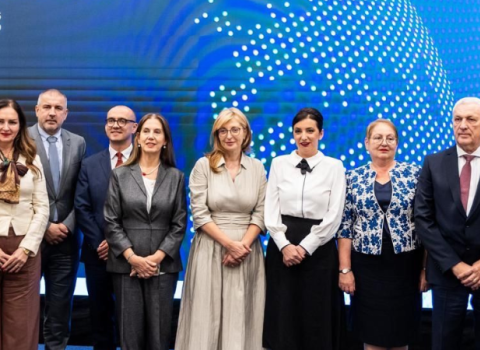Across Europe smart electricity grid investments are on the rise. According to the EU’s Joint Research Centre (JRC), 459 smart grid projects existed at the end of 2013 – an increase of nearly 200 projects from the previous year.
The JRC, which operates as the European Commission's in-house science service, announced headline results of its annual stock-taking study at an industry smart grid event on 25 March jointly hosted by the European Network of Transmission System Operators for Electricity (ENTSO-E) and European Distribution System Operators (EDS0).
Gianluca Fulli, coordinator of the stocktaking report for the JRC, said the bulk of initiatives in Europe are found in the usual suspects: the UK, Germany, Benelux countries, France and Italy remain the leading lights for grids. In Eastern European, the number of implementation sites are increasing but the level of investments is lower.The percentage of national funding for grids in Europe is slightly higher than EU’s contribution at 57%. The EU has invested some €3 billion to date.
Moving closer to joined-up thinking on grids
Delivering the keynote speech on the conference’s first day, Dominique Ristori, Director-General of DG Energy at the European Commission, reinforced the importance of coordinated efforts when it comes to the deployment of smart grids.
He said: “I see the need to incorporate smart grids and smart metering because, in terms of maturity of technologies, we’re approaching the time of full deployment of smart grids but, this will take coordinated efforts.”
He also focused minds on the international competition. “When it comes to the number of patents filed for smart energy products, the United States is in the lead,” he added.
Richard Charnah, Chairman ETP SmartGrids, expressed his hope that someone in the Commission was keeping a bird’s eye view of all of Europe’s smart grid projects. “The worry is that we’ll develop fantastic systems that don’t overlap,” he said.
Of course, there are limits to how much information competitors can share with each other. Given that reality, should the EU try and force people to share more information through incentives, asked Per Olof Granström, Secretary General, EDSO for smart grids and the morning session’s moderator.
“Collaboration is already quite clearly part and parcel of receiving funding from the EU,” said Magdalena Olteanu, head of unit for new energy technologies at DG Energy in the Commission. There should be no restrictions on operators sharing methodologies, added Michele De Nigris, coordinator of the “GRID+” project.
While multinational efforts are increasing, the impact of smart grid initiatives could be greater.
De Nigris, whose project provides operational support for the development of smart grid roadmaps, said one disappointment with his team’s efforts was that they did not, “have more impact at national and regional level.” The level of international outreach could also be greater, he added.
Pieces of the funding puzzle
Smart girds are a part of the EU’s general move towards a low carbon economy. In Horizon 2020, the EU’s main research fund, investments focus on research, development and full scale demonstration of new grid technologies.
Patrick Van Hove, research programme officer at DG Research in the European Commission said that: “funding will not just be technology-oriented. With energy listed as a societal challenge, we expect to fund other aspects as well – new business models and studies that look at the impact on consumers and the wider society.”
In 2014 and 2015, there will be five relevant calls in Horizon 2020 for smart grids under the broad headings of energy efficiency, smart cities, low carbon energy, SMEs and energy fission.
In addition to Horizon 2020, regional funding options were also debated at the conference.
Maud Skäringer, a policy analyst at the Competence Centre Smart and Sustainable Growth in DG REGIO said that lower carbon emissions was a headline focus of the new round of funding, 2014-2020, but conceded that regions themselves will largely determine what they want to concentrate on.
Funding will be available from the European Institute of Innovation and Technology’s (EIT) “KIC-InnoEnergy” programme. Unlike other instruments, this will be in the form of investment, rather than subsidies, as the EIT has competencies to act similarly to a business angel for certain research initiatives.
“KIC-InnoEnergy is not about moving products closer to the market, it’s about putting them on the market,” said Peter Verboven, who will oversee lending for smart grids.
Olteanu waved away concerns from researchers that the transfer of smart grids oversight from DG Research to DG Energy will result in new procedures. “We’re talking about the same Commission and the same energy policy: nothing material will change,” she reassured.
A full report will be published soon on the Commission website.




 A unique international forum for public research organisations and companies to connect their external engagement with strategic interests around their R&D system.
A unique international forum for public research organisations and companies to connect their external engagement with strategic interests around their R&D system.